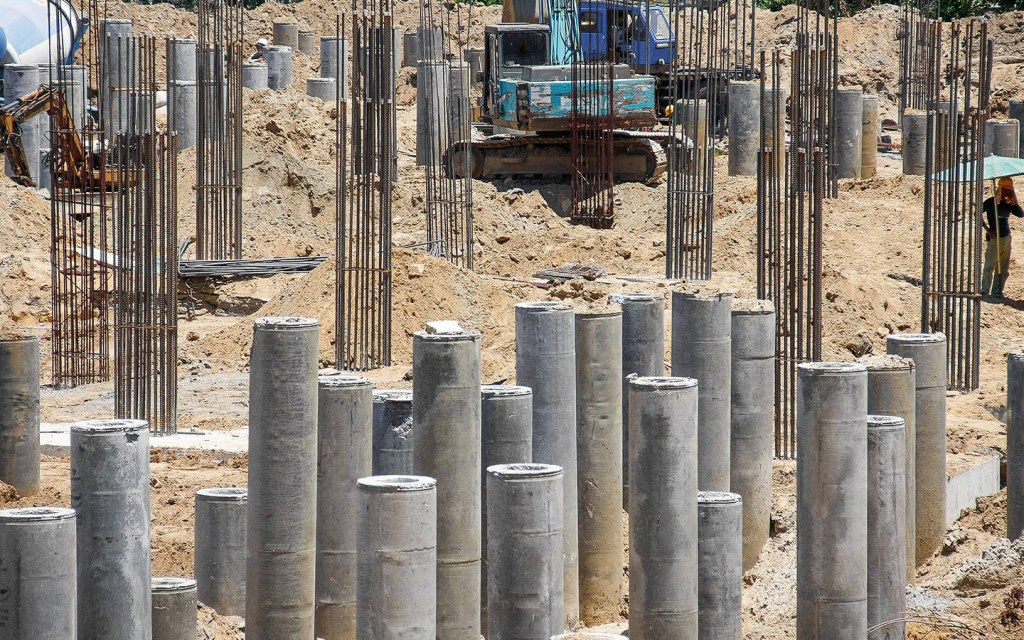NEWS
Construction Projects: Exploring Deep Foundation Materials

Construction Projects
The stability and resilience of any structure rely heavily on the strength and integrity of its foundation. Deep foundations are crucial components in constructing large-scale buildings, bridges, and infrastructures that require support and stability in challenging soil conditions. These foundational elements anchor structures to stable soil layers deep beneath the surface, mitigating the risks posed by weak and unstable surface soils. What are common deep foundation materials? How do they ensure the safety and longevity of structures?
Micropiles
Of the deep foundation materials, micro piles remain one of the most popular. Micropiles, also known as mini-piles or pin piles, are slender deep foundation elements that offer unique advantages in restricted and challenging construction sites. They are typically made from steel or high-strength concrete and are installed using drilling techniques. Micropiles are ideal for retrofitting existing structures, underpinning foundations, and supporting structures in regions with limited access or restricted spaces.
Helical Piles
Helical piles are innovative deep foundation materials designed with helical plates or blades welded to a central steel shaft. These piles are screwed into the ground, rather than being driven or drilled, making them a viable option for projects with noise and vibration constraints. Helical piles excel in both tension and compression, offering excellent load-bearing capacities, especially in areas with expansive or soft soils.
Concrete Piles
Concrete piles are one of the most commonly used deep foundation materials. They are precast, cylindrical elements made of reinforced concrete that is driven or drilled into the ground to support heavy loads. The durability and load-bearing capacity of concrete piles makes them suitable for various applications, from high-rise buildings to bridges and offshore structures. They can be driven into the ground using impact hammers or installed using drilling methods such as auger-cast or drilled shaft techniques.
Steel Piles
Steel piles are another prevalent deep foundation material, known for their exceptional strength and versatility. They are typically constructed from steel beams or pipes, making them ideal for projects that require high load-bearing capacities, such as tall buildings and large industrial structures. Steel piles can be driven into the ground more easily than concrete piles, and their adaptability allows for modifications during the construction process.
Timber Piles
Timber piles, made from wood, were once a common choice for deep foundation materials. While their usage has diminished due to environmental concerns and the advent of more robust alternatives, timber piles are still employed in certain situations where they offer cost-effective and sustainable solutions. However, their susceptibility to decay and degradation limits their application to projects with low to moderate loads and non-aggressive environments.
Grouted Piles
Grouted piles, also known as pressure-injected footings, are versatile deep foundation materials that utilize grout injected under pressure to improve soil stability. These piles are typically made from steel casings or tubes and are drilled into the ground. The injection of grout into the surrounding soil reinforces its load-bearing capacity, ensuring enhanced stability and resistance to settlement.
Deep foundation materials play a pivotal role in establishing stable and resilient structures, especially in areas with challenging soil conditions or when encountering high loads. The selection of the appropriate deep foundation material depends on various factors, including soil characteristics, construction site limitations, and project requirements. By understanding the significance of deep foundation materials and incorporating them effectively, engineers can ensure the long-lasting stability and safety of structures, paving the way for sustainable development and progress in the built environment.
Having completed my education in English, I’ve cultivated a successful career as a content writer. My tenure includes valued collaborations with distinguished professional organizations, reflecting my commitment to producing high-quality content.
Contact me on this mail: [email protected]










